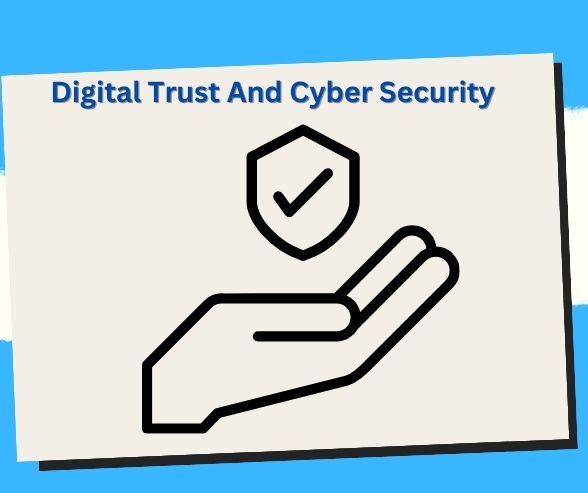
Trust No One: Embracing Zero Trust for Ultimate Network Protection! 👤🛡️
🔒 Secure tomorrow’s networks today: Zero Trust Architecture shields networks, ensuring resilient protection in an ever-evolving digital landscape! 🛡️🌐
Embracing Zero Trust Architecture: A Paradigm Shift in Network Security 🛡️🔒
In the ever-evolving landscape of cybersecurity, the concept of Zero Trust Architecture emerges as a sentinel—a paradigm shift challenging the traditional notions of network security. As organizations navigate the complex web of cyber threats, Zero Trust Architecture stands as a beacon of fortified defense, redefining how we perceive and safeguard network environments.
The Genesis of Zero Trust: Dispelling Assumptions
Traditionally, network security relied on the premise of a trusted internal network and an untrusted external one. However, the evolving threat landscape shattered these assumptions, giving rise to the Zero Trust model—a philosophy that trusts no entity by default, irrespective of its location, inside or outside the network perimeter.
Zero Trust Principles: Verifying and Validating
Zero Trust Architecture embodies a set of principles—verification and validation become the pillars. It’s about authenticating and authorizing every access request, scrutinizing user identity, device health, location, and other contextual parameters before granting access, regardless of the location or the entity’s status.
Moving Beyond Perimeters: Redefining Boundaries
The essence of Zero Trust lies in transcending traditional network perimeters. It’s about deconstructing the castle-and-moat approach and embracing a model where security travels with the user or device, encompassing micro-segmentation, least-privilege access, and continuous monitoring.
User-Centric Security: Fostering Trust in Every Interaction
Zero Trust shifts the focus from securing the network perimeter to securing every interaction. It’s about protecting data and resources at the granular level, ensuring trust in each transaction, communication, or data access, irrespective of the network’s boundaries.
Continuous Monitoring and Analytics: The Sentinel’s Gaze
The Zero Trust model thrives on continuous monitoring and analytics. Machine learning, AI-driven behavioral analytics, and threat intelligence become the vigilant sentinels, detecting anomalies, identifying potential threats, and triggering immediate responses.
Resilience Against Breaches: Mitigating Risks
Zero Trust Architecture isn’t foolproof, but it’s resilient. Even in the event of a breach, its micro-segmentation and least-privilege access minimize lateral movement, limiting the impact and containment of potential damage.
Collaboration and Integration: Unifying Security Measures
Implementing Zero Trust involves collaboration among various security measures. Integration of identity and access management (IAM), multi-factor authentication (MFA), encryption, and endpoint security solutions coalesce into a unified fortress, fortifying defenses across the network.
Education and Cultural Shift: Embracing Zero Trust Mindset
Adopting Zero Trust isn’t just a technological shift; it’s a cultural transformation. Educating stakeholders about its principles, fostering a culture of continuous verification, and promoting a mindset of distrust by default contribute to its successful implementation.
Challenges and Evolution: The Road Ahead
The journey towards Zero Trust isn’t devoid of challenges—legacy systems, cultural resistance, and the need for continual evolution pose hurdles. However, organizations must evolve, adapt, and iterate to embed Zero Trust into their security fabric.
Conclusion: Embracing a New Era of Network Security
Zero Trust Architecture isn’t a destination but a journey—a paradigm shift in how we perceive and practice network security. It’s a testament to our resilience, a proactive approach that challenges traditional norms and fortifies defenses in an ever-evolving cyber threat landscape.
As organizations embark on this transformative journey, let’s embrace the ethos of continuous verification, integration, and vigilance. Let’s reimagine network security not as a static fortress but as an adaptive and resilient ecosystem, where trust is earned in every interaction, forging a future where cybersecurity isn’t just a defense but a proactive guardian of digital assets.
Key Phrases 🔒🔗
Rethinking network security
Evolution of trust mechanisms
Network fortification strategies
Securing digital boundaries
Impenetrable network defenses
Zero Trust against cyber threats
Reshaping security paradigms
Constant validation in networks
Redefining access control
Shielding networks from intrusions
Save/Share this story with QR CODE
Disclaimer
This article is for informational purposes only and does not constitute endorsement of any specific technologies or methodologies and financial advice or endorsement of any specific products or services.
📩 Need to get in touch?
Feel free to Email Us for comments, suggestions, reviews, or anything else.
We appreciate your reading. 😊Simple Ways To Say Thanks & Support Us:
1.) ❤️GIVE A TIP. Send a small donation thru Paypal😊❤️
Your DONATION will be used to fund and maintain NEXTGENDAY.com
Subscribers in the Philippines can make donations to mobile number 0917 906 3081, thru GCash.
3.) 🛒 BUY or SIGN UP to our AFFILIATE PARTNERS.
4.) 👍 Give this news article a THUMBS UP, and Leave a Comment (at Least Five Words).
AFFILIATE PARTNERS

World Class Nutritional Supplements - Buy Highest Quality Products, Purest Most Healthy Ingredients, Direct to your Door! Up to 90% OFF.
Join LiveGood Today - A company created to satisfy the world's most demanding leaders and entrepreneurs, with the best compensation plan today.



 Business Technology, Finance Technology & Information Technology
Business Technology, Finance Technology & Information Technology





